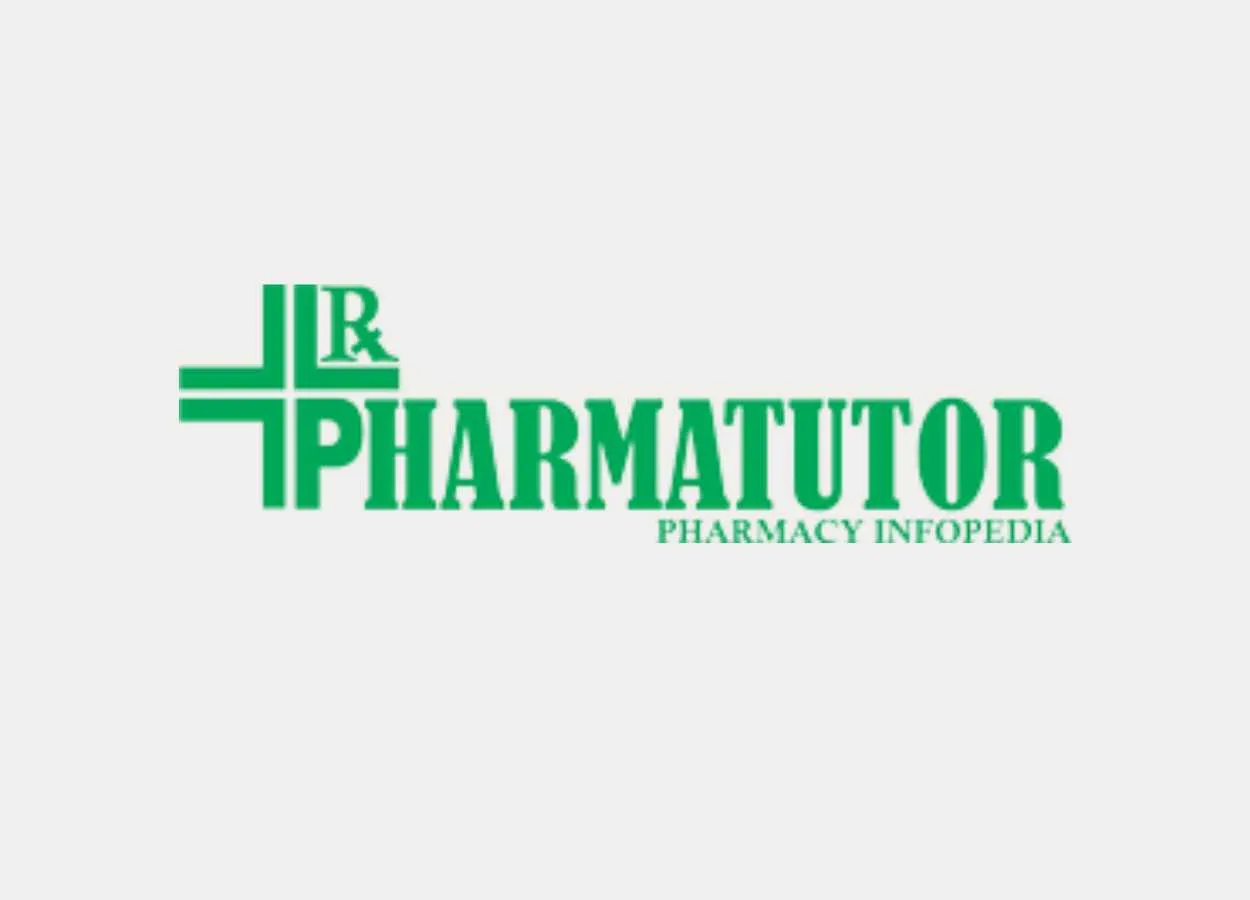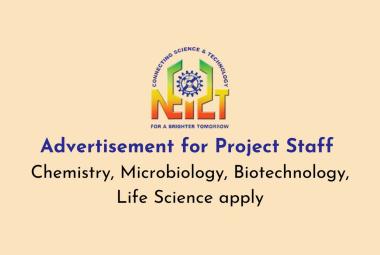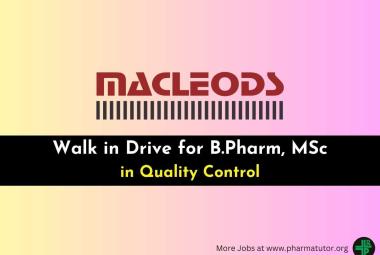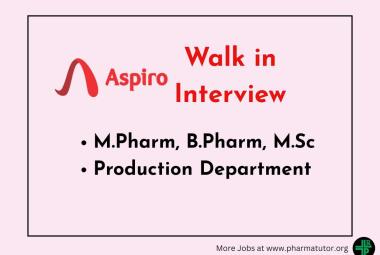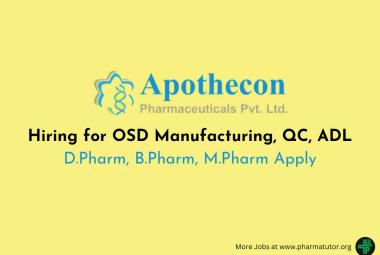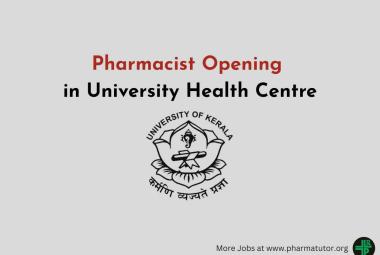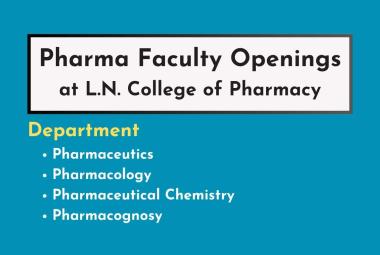{ DOWNLOAD AS PDF }
ABOUT AUTHORS
V. Anitha*, Dr. P Dwarakanadha Reddy, Dr. S Ramkanth
Department of Pharmaceutics, Annamacharya College of Pharmacy, Rajampet,
Andhra Pradesh, India-516126
ABSTRACT :
Herbal medicine is an essential part of the health care system all over the world. However, some of the bioactive principles have poor bioavailability and less absorption in gastro intestinal tract due to long side chains in their structure and high polarity. The challenge for herbal medicine practicenors is to enhance the bioavailability of these bioactive principles. With the advances in technology, a novel herb drug delivery system called phytosome improve absorption and bioavailability of bioactive principles and gained a substantial importance in health care system. The present review highlights the method of preparation, properties, advantages, characterization, and applications of phytosomes.
Reference Id: PHARMATUTOR-ART-2669
|
PharmaTutor (Print-ISSN: 2394 - 6679; e-ISSN: 2347 - 7881) Volume 7, Issue 06 Received On: 23/05/2019; Accepted On: 27/05/2019; Published On: 01/06/2019 How to cite this article: V, A., Reddy, P.D. and S, R. 2019. Phytosomes : a Promising Technology in Novel Herbal Drug Delivery System. PharmaTutor. 7, 6 (Jun. 2019), 18-25 |
INTRODUCTION:
The use of herbal medicines and phytonutrients or nutraceuticals continues to expand rapidly across the world with many people now resorting to these products for treatment of various health challenges in different national healthcare settings (WHO, 2004). Although therapies involving these agents have shown promising potential with the efficacy of a good number of herbal products clearly established, many of them specially polyphenols shows poor bioavailability which is a challenge for health care practicenors. (Awasthi, Kulkarni, and Pawar, 2011).
Novel drug delivery system is a novel approach to drug delivery that addresses the limitations of the traditional drug delivery systems. Over the past century, phytochemical and phyto - pharmacological sciences established the compositions, biological activities and health promoting of numerous botanical products (Bhattacharya S and Ghosh A, 2008). Phytosomes are said to be containing natural herbal formulations. Most of the plants are having medicinal properties due to the presence of many active constituents which are mainly the secondary metabolites like flavonoids, terpenoids, tannins, glycosides and alkaloids. The active constituents present in the plants are mostly hydrophilic in nature. Toxicity and absorption problem limit the use of these constituents. A part from the herbal extracts are destroyed by the digestive secretions and gut bacteria (Bhattacharya S, 2009). Extensive researchers have been conducted for successful delivery of these plant derived products since the last century.
Phytosomes is newly introduced patented technologies by Indena to developed and incorporate the standardized plant extracts (Arijit Gandhi et al., 2012). The term “phyto” means plant “some” means cell like (Pawar HA and Bhangale BD, 2015). It is also called as herbosomes. Water – soluble phytoconstituent molecules can be converted into lipid compatible molecular complexes, which are called Phytosomes (Ankur Choubey, 2011). Phytosomes have improved pharmacokinetic and pharmacological parameter. Phytosomes are more bioavailable as compared to simple herbal extracts owing to their enhanced capacity to cross the lipid rich biomembranes and finally reaching the blood (Zahid et al., 2018). The lipid – phase substances employed to make phytoconstituents, lipid – compatible are phospholipids from soy, mainly phosphotidylcholine {PC} (Ravi G S, 2015).
Phytosomes has been a promising technology in delivery of herbal drug and nutraceuticals. The phytosomes process has been applied to many popular herbal extracts including Ginko Biloba, Grape seed, Hawthorn, Milk thistle, Green tea and Ginseng (Saini et al., 2013).
Method of Preparation
Phytosomes are prepared by different methods by interacting 3-2 moles natural or synthetic phospholipid, mainly phosphotidylcholine with one mole of phytoconstituents (Saha et al., 2013). The most preferable ratio for complexes formation between these two moieties is in the range from 0.5 to 2.0 moles. (Pawar HA and Bhangale BD, 2015)
Solvent evaporation method
The particular quantity of drug, polymer and phospholipids can be taken into a spherical bottom flask and reflux with specific solvent at a temperature 50-60ºc for 2 hr. The mixture may be concentrated to 5 – 10 ml to get the precipitate which can be filtered and collected. The dried precipitate phytosome loaded can be placed in amber colored glass bottle and stored at room temperature. (Mazumder et al., 2016)
Rotary evaporation technique
The specific amount of drug and soya lecithin were dissolved in 30 ml of tetrahydrofuran in a rotary round bottom flask followed by stirring for 3 hours at a temperature not exceeding 40oC. (Awasthi et al., 2011). Thin film of the sample was obtained to which n-hexane was added and continuously stirred using a magnetic stirrer. The precipitate obtained was collected, placed in amber colored glass bottle and stored at room temperature.
Antisolvent precipitation technique
The specific amount of drug and soya lecithin were taken into a 100 ml round bottom flask and refluxed with 20 ml of dichloromethane at a temperature not exceeding 60oC for 2 h. The mixture is concentrated to 5-10 ml. Hexane (20 ml) was added carefully with continuous stirring to get the precipitate which was filtered and collected and stored in vacuum desiccators overnight. The dried precipitate is crushed in mortar and sieved through #100 meshes. Powdered complex was placed in amber colored glass bottle and stored at room temperature. (Jan et al., 2013)
Salting out method
The phytoconstituent or standardized extract and phosphotidylcholine is dissolved in an aprotic solvent, such as dioxane or acetone where the solution is being stirred overnight then the formed complex is isolated from by precipitation from non-solvent like n-hexane (Yanyu X et al., 2006).
Lyophilization technique
Both natural or synthetic phospholipid and phytoconstituent is dissolved in different solvent and further solution containing phytoconstituent were added to a solution containing phospholipid followed by stirring till complex formation takes place. The formed complex is isolated by lyophilization (Mascarella S, 1993).
The phospholipid which are used in preparation of phytosome consist of acyl group which may be same or different in phosphatidylcholine, phosphatidylserine, phosphatidyl ethanolamine and mostly derived from palmitic, stearic, oleic, and linoleic acid (Maiti K et al., 2007). In phytosome active principle becomes an integral part of the membrane as the active principle is anchored to the polar head of phospholipid (Jain N et al., 2008).
Mechanical Dispersion method
In this method, the lipids dissolved in organic solvent are brought in contact with aqueous phase containing the drug (Sikarwar MS et al., 2008). Initially, pc is dissolved in diethyl ether which is later slowly injected to an aqueous solution of the phytoconstituents to be encapsulated. The subsequent removal of the organic solvent under reduced pressure leads to the formation of phyto-phospholipid complex. Novel methods for the phospholipid complex preparation includes super critical fluids (SCF), which include gas anti-solvent technique (GAS) compressed anti solvent process (PCA), supercritical anti solvent method (SAS) (Li Y et al., 2008).
Different additives used in the formulations of Phytosomes: (Naik et al., 2008)
Phospholipids: Soya phosphatidyl choline, Egg phosphatidyl choline, Dipalmityl phosphatidyl choline, Distearyl phosphatidyl choline.
Aprotic solvent: Dioxane, acetone, methylene chloride
Non solvent: n-hexane and non-solvent i.e. aliphatic hydrocarbon
Alcohol: Ethanol, Methanol
Characterization and evaluation of phytosomes:
Characterization techniques: (Anila Suryakant Kadu and Madhavi Apte 2017)
Visualization
Transmission electron microscopy and scanning electron microscopy are used for visualization of phytosomes.
Transition temperature
Differential scanning calorimetry is used to determine transiton temperature of vesicular lipid system.
Surface tension measurement
Surface tension activity can be measured by ring method in a Du Nouy ring tensiometer of the drug in aqueous solution.
Vesicle stability
Assessing the size and the structure of vesicles overtime gives the idea about stability of vesicles. Structural changes are monitored by TEM and mean size is measured by DLS.
Scanning electron microscopy (SEM)
Scanning electron microscopy has been used to determine particle size distribution and surface morphology of the complexes. Samples were studied using JEOL JSM-6360 Scanning microscope (Japan). Dry samples were placed on an electron microscope brass stub and coated with gold in an ion sputter. Digital images of phytosome complex of lawsone were taken by random scanning of the stub at 1000, 5000, 10000 and 30000 X magnifications.
Entrapment efficiency
The entrapment efficiency of a phytosomal formulation can be determined by subjecting the formulation to ultracentrifugation technique.
Evaluation of Phytosomes: (Anila Suryakant Kadu and Madhavi Apte 2017)
Spectroscopic evaluations to confirm the formation of a complex or to study the reciprocal interaction between the phyto-constituent and the phospholipids, the following spectroscopic methods are used.
1H-NMR: Bombardelli et al studied the NMR spectra of (+)-catechin and its stoichiometric complex with distearoylphosphatidylcholine. In nonpolar solvents, there is a marked change of the 1H-NMR signal originating from the atoms involved in the formation of the complex, without any summation of the signal peculiar to the individual molecules. The signals from the protons belonging to the flavonoids are to be broadened that the proton cannot be relieved. In phospholipids, there is broadening of all the signals while the singlet corresponding to the N-(CH3)3 of choline undergo an uplift shift. Heating the sample to 60˚ results in the appearance of some new broad bands, which correspond mainly to the resonance of the flavonoid moiety.
13C-NMR: In the spectrum of (+)-catechin and its stoichiometric complex with distearoylphosphatidylcholine, particularly when recorded in C6D6 at room temperature, all the flavonoid carbons are clearly invisible. The signals corresponding to the glycerol and choline portion of the lipid (between 60–80 ppm) are broadened and some are shifted, while most of the resonances of the fatty acid chains retain their original sharp line shape. After heating to 60˚, all the signals belonging to the flavonoid moieties reappear, although they are still very broad and partially overlapping.
FTIR: The formation of the complex can be also be confirmed by IR spectroscopy by comparing the spectrum of the complex with the spectrum of the individual components and their mechanical mixtures. FTIR spectroscopy is also a useful tool for the control of the stability of phytosomes when micro-dispersed in water or when incorporated in very simple cosmetic gels. From a practical point of view, the stability can be confirmed by comparing the spectrum of the complex in solid form (phytosomes) with the spectrum of its micro-dispersion in water after lyophilization, at different times. In the case of simple formulations, it is necessary to subtract the spectrum of the excipients (blank) from the spectrum of the cosmetic form at different times, comparing the remaining spectrum of the complex itself.
Invitro – Invivo evaluations
Models of in-vitro and in-vivo evaluations are selected on the basis of the expected therapeutic activity of biologically active phytoconstituents present in the phytosome. For example, in-vitro anti-hepatotoxic activity can be assessed by the antioxidant and free radical scavenging activity of phytosome. (Saini et al., 2013)
For assessing in vivo anti-hepatotoxic activity, the effect of prepared phytosomes on animals against thioacetamide, paracetamol or alcohol induced hepatotoxicity can be examined. Skin sensitization and tolerability studies of glycyrrhetinic acid phytosome ointment, a commercial product, describe the in-vivo safety evaluation methodology. (Bui Thanh Tung et al., 2017)
NOW YOU CAN ALSO PUBLISH YOUR ARTICLE ONLINE.
SUBMIT YOUR ARTICLE/PROJECT AT editor-in-chief@pharmatutor.org
Subscribe to Pharmatutor Alerts by Email
FIND OUT MORE ARTICLES AT OUR DATABASE
Applications of phytosome technology and commercially available products based on phytosome technology
Milk thistle (Silybum marianum)
Much of the studies have been conducted on the application of phytosome technology to Silybum marianum (milk thistle) which contains flavonoids, a liver-protectant phytoconstituent. Milk thistle has shown positive effects in treating various kinds of diseases (hepatitis, cirrhosis, fatty infilteration of the liver, etc.) S. marianum has a strong antioxidant activity which boosts the resistance of liver against toxic constituents (Valenzuela et al., 1989). The three flavonoids which are present in S. marianum include silybin, silydianin and silychristin with silybin predominating followed by silydianin and silychristin. Silybin is the most potent of the three and is actually a flavonolignan (Hikino et al., 1984). Silybin conserves glutathione in parenchymal cells (Valenzuela et al., 1989) and thus protects liver cells while as PC helps repair and replace cell membranes (Kidd, 1996). It is clear that silybin has a better hepatoprotective effect which is limited by its poor bioavailability which can be overcome by producing a Silybin phytosome (Nilesh Jain et al., 2010).
Green tea
Green tea is a strong antioxidant. According to a research from University of Kansas, the antioxidant potential of green tea is 100 times greater than vitamin C, 25 times greater than vitamin E and twice as strong as resveratol (CNN- American Chemical Society). A phytosome product with the commercial name GreenSelect® phytosome is available in the market. It contains a totally standardized poyphenolic fraction (containing not less than 66.5% and is mainly characterized by the presence of epigallocatechin and its derivatives. Francesco et al., 2009 conducted a research in which fifty subjects were fed with green tea extract plus hypocaloric diet while other fifty subjects were fed only with hypocaloric diet. After 90 days of treatment, a significant weight loss and decreased body mass index (BMI) was observed in the human subjects fed with both green tea extracts and hypocaloric diet than the human subjects fed with only hypocaloric diet. From the study, it was also observed that waistline in male subjects only (Nilesh et al., 2010).
Hesperetin
A novel hesperetin was developed by (Mukherjee et al., 2008) by combining and complexing hesperetin with hydrogenated phosphatidyl choline. Mukherjee et al. (2008) also studied its antioxidant activity and pharmacokinetic studies in CC14 intoxicated rats along. The results of the study showed the phytosome has shown high antioxidant activity. Pharmacokinetic studies have revealed the improved bioavailability of phytosomes than the parent molecule at the same dosage.
Quercetin
The commercially available quercetin phytosome is Meriva® (500mg) 60VC. The constituents present in Curcumin (curcumin, demethoxycurcumin, bisdemethoxycurcumin) are poorly absorbed when taken orally which could be overcome by phytosome technology. In Meriva®, each curcuminoid molecule is individually complexed with molecules of the vital cell membrane nutrient phosphatidylcholine (PC). This results in better and faster entry of curcumin molecules into the cells and improving beneficial effects such as: it protects against premature molecular break down, promotes healthy functioning of joints and other organs. Curcumins help in protecting cell membrane due to its high antioxidant activity. Curcumin helps to prevent the free radical damage on the cell membrane, DNA and genes (Soni and Kuttan, 1992). Membranes are prone to oxidative damage but curcumin acts as a guard to protect them from lipid peroxidation (Barry et al., 2009)
Ginkgo (Ginkgo biloba)
It contains 24% of ginkgo flavonoids from Ginkgo biloba. It protects brain and vascular linings and has an anti-skin ageing (Rajendra, 2011). According to some results, ginkgo phytosome produced better results as compared to conventional standardized Ginkgo biloba extract (GBE) containing 24% ginkgo flavones glycoside and 6% terpene lactones (Bhattacharya, 2009). A study was conducted on 15 healthy human volunteers in which the bioavailability of ginkgo phytosome has been compared with GBE. Volunteers were divided into two groups and were administered respectively with Ginkgoselct® and Ginkgoselect® phytosome. The subjects switched formulations after a week of wash out. Blood samples were taken from each human subject at 30, 60, 120, 180, 240, 300 and 400 minute after ingestion. Detection of terpenes lactones was performed by liquid chromatography/atmospheric pressure chemical ionization mass spectrometry (LC/APCI-ITMS). It was found from the results that Ginkgolides A, B and bilobalide were absorbed to a higher extent (about three times after administration of Ginkgoselect® phytosome
Olive (Olea europaea) oil
A commercially available phytosome- OleaselectTM PHYTOSOME is available in the market based on olive oil polyphenols (Pandey and Patel, 2010). It is a strong antioxidant, anti-inflammatory and anti-hyperlipidemic (Rajendra, 2011). It inhibits the oxidation of LDL cholesterol and is cardioprotective.
Bilberry
A commercially available phytosome based on bilberry is available in market with trade name - Mirtoselect® PHYTOSOME. It contains an extract of bilberry which is a source of anthocyanosides. These improve the permeability of blood vessels are strong antioxidants (Pandey and Patel, 2010).
Grape (Vitis vinifera)
Leucoselect® PHYTOSOME is a phytosome preparation based on grape anthocyanidins. Grape seed phytosome is composed of polyphenols complexed with phospholipids. It has a strong antioxidant activity and is cardioprotective (Nilesh et al., 2010).
Advantages and disadvantages of phytosome technology
Advantages of phytosome technology: (Anila Suryakant Kadu and Madhavi Apte 2017, Zahid et al., 2018)
The phytosome technology has revolutionized the nutraceutical industry by serving the following benefits.
1. Phosphatidylcholine, one of the components of phytosome, has a dual function that it acts a carrier as well as has a health benefit such hepatoprotective effect.
2. The composition of phytosome is safe and the components are approved for pharmaceutical use.
3. The absorption and bioavailability of water soluble phytoconstituents is increased. This results in better therapeutic effects.
4. They can be used for systematic targeting as phytosomes are able to transit from hydrophilic environment into lipophilic environment of enterocyte cell and from there into cell.
5. As absorption of chief phytoconstituents is improved, dose requirement is reduced.
6. Unlike Liposomes, chemical bonds are formed between phosphotidylcholine and phytoconstituent, so phytosomes show better stability profile.
7. The nutrient safety of the herbal extracts need not be compromised by conveying the herbal drug as means of phytosomes.
8. Dose requirement has been reduced due to the maximum absorption of chief constituents.
9. Marked enhancement in the bioavailability of drug occurs.
10. Entrapment efficiency is high and more over predetermined because drug itself is in conjugation with lipids in forming vesicles.
11. There is no problem in drug entrapment while formulating phytosomes.
12. Phytosomes shows better stability profile due to the formation of chemical bonds between phosphatidylcholine molecules and the phytoconstituents.
13. Phosphatidylcholine used in formulating phytosome process besides acting as a carrier also nourishes the skin as it is an essential part of a cell membrane.
14. Phytosomes are also superior to liposomes in skin care products.
15. The formulation and components used for the synthesis of phytosomes are harmless and therefore fit for commercial use. Moreover, this technology has a low risk profile; the toxicology evaluations of the various components have been well documented.
16.Phytosomes are particularly helpful in maintaining liver functioning and upkeep. In addition to increasing the bioavailability of flavonoids used to ensure proper liver function, phosphatidylcholine exhibits protective abilities which further helps ensure a healthy liver.
17.Phytosomes present a cost effective means of administering skin protective phytoconstituents in both a normal and stressful environment. Once again, phosphatidylcholine helps care for the skin by providing nourishment. Phytosomes also help increase the distribution of phytoconstituents made via dermal and transdermal routes. Zaveri et al., 2011 conducted a study comparing the permeation of curcumin and curcumin phytosome and reported that the curcumin phytosome had a 60% better permeation.
18. Phytosome technology is passive, non-invasive, provides increased bioavailability and is market-ready.
19. The obstacle of drug entrapment does not arise during the formulation process.
20. Phytosomes present a means of delivering a wide range of therapeutic compounds in addition to being a more stable option due to the chemical bonding between the phospholipid and the therapeutics compounds.
21. As a result of the increased bioavailability and absorption of the phytoconstituent and sustained release pattern of the phytosome, the effective dose could potentially be reduced, i.e. the phytoconstituent could be administered in a smaller quantity but still be able to attain the desire result.
22. The synthesis of phytosomes involves a fairly simplistic process and therefore presents no immense technical or monetary investments.
23. Phytosomes can effectively and efficiently pass from a hydrophilic environment to a hydrophobic one (enterocyte membrane) and furthermore to the cell. They can therefore be used for systemic targeting.
24. Nutritional value of the plant extract is increased due to the presence of phospholipids.
25. The method of preparation of Phytosome is relatively simple.
26. Phytosomecan permeate easily through skin.
27. The water soluble phytoconstituents can be protected from destruction by digestive enzyme and gut bacteria because of phospholipid layer.
28. Phytosome, is also a good option for systematic targeting.
29. It has no large-scale drug development risk the since the toxicological profile of phytosomal component is well documented in scientific literature.
30. It is simple to manufacture, with no complicated technical investment for production of phytosome.
Disadvantages:
Although Phytosome having so many advantages but instead of that this technology has some disadvantages like rapidly elimination of phytoconstituents from the Phytosome (Mateus et al., 2019).
CONCLUSION:
Phytosome is an innovative form of formulation for herbal extract which shows better absorption than conventional herbal extract. The poor bioavailability and absorption of water soluble phytoconstituent which could be overcome by phytosome technology as it provides optimum delivery of active phytoconstituent. The absorption of phytosome through skin and gastrointestinal tract is increased due to improved lipid solubility, which enable them to cross biological membrane, resulting in enhanced bioavailability. It requires less doses than conventional herbal extract due to increased bioavailability. Many areas of phytosome are to be revealed in future in the prospect of pharmaceutical application. Phytosome technology is the advance form of herbal extract or phytochemicals delivery that possess a better absorption of drug and more therapeutic effect as compared to conventional herbal drug delivery system. Phytosome serves as a bridge between conventional drug delivery system and novel drug delivery system with an improved pharmacokinetic and pharmacological effect which is useful in the treatment of various diseases.
REFERENCES
1. Anila Suryakant Kadu and Madhavi Apte (2017); Phytosome: A Novel Approach to Enhance the Bioavailability of Phytoconstituent; Asian Journal of Pharmaceutics; Apr-Jun (Suppl); 11 (2); S453-460
2. Ankur Choubey (2011); Phytosome- A novel approach for herbal drug delivery; International Journal of Pharmaceutical Sciences and Research; 10; 807-815
3. Arijit Gandhi , Avik Dutta, Avijit Pal and Paromita Bakshi (2012); Recent Trends of Phytosomes for Delivering Herbal Extract with Improved Bioavailability; Journal of Pharmacognosy and Phytochemistry; 1(4); 6-14
4. Awasthi Rajendra, Kulkarni Giriraj, pawar Vivek(2011); Phytosomes: an approach to increase the bioavailability of plant extracts; International Journal of Pharmacy and Pharmaceutical Sciences; 3(2); 1-3
5. Awasthi, R., Kulkarni, G. T., and Pawar, V. K. (2011); Phytosomes: An approach to increase the bioavailability of plant extracts; International Journal of Pharmacy and Pharmaceutical Sciences; 3(2); 1-3
6. Barry J, Fritz M, Brender JR (2009); Determining the effects of lipophilic drugs on membrane structure; J Am Chem Soc; 131; 4490-4498
7. Bhattacharya S (2009); Phytosomes: emerging strategy in delivery of herbal drugs and nutraceuticals; Pharma Times; 41; 9-12
8. Bhattacharya S, Ghosh A (2008); Phytosomes: the Emerging Technology for Enhancement of Bioavailability of Botanicals and Nutraceuticals; The Internet Journal of Aesthetic and Antiaging Medicine; 2(1)
9. Bui Thanh Tung, Nguyen Thanh Hai and Phan Ke Son (2017); Hepatoprotective effect of Phytosome Curcumin against paracetamol-induced liver toxicity in mice; Braz. J. Pharm. Sci.; 53(1); e16136
10. Campos R, Garrido A, Guerra R, Valenzuela A (1989); Silybin dihemisuccinate protects against glutathione depletion and lipid peroxidation induced by acetaminophen on rat liver; Planta Med; 55; 417-9.
11. Hikino H, K. Y. (1984); Antihepatotoxic Actions of Flavonolignans from Silybum Marianum Fruits; Planta Med.; 50; 248-250
12. Jain N, Gupta BP, Thakur N, Banweer J (2008); Phytosome: A novel drug delivery system for herbal medicine; Int J Pharm Sci Drug Res; 2; 224-8
13. Jan Hüsch, Janine Bohnet, Gert Fricker, Carsten Skarke, Christian Artaria, Giovanni Appendino, Manfred Schubert-Zsilavecz, Mona Abdel-Tawab(2013); Enhanced absorption of boswellic acids by a lecithin delivery form (Phytosome®) of Boswellia extract; Fitoterapia; 84; 89-98
14. Kidd, P. M. (1996); Phytosomes, Highly Bioavailable Plant Extracts.
15. Li Y, Yang DJ, Chen SL, Chen SB, Chan AS(2008); Comparative physicochemical characterization of phospholipids complex of puerarin formulated by conventional and supercritical methods; Pharm Res; 25(3) ;563-77.
16. Maiti K, Mukherjee K, Gantait A, Saha BP (2007); Curcuminphospholipid complex: Preparation, therapeutic evaluation and pharmacokinetic study in rats; Int JPharm; 330; 155-63
17. Mascarella S (1993); Therapeutic and anti-lipoperoxidant effects of silybin-phosphatidylcholine complex in chronic liver disease; Curr Ther Res; 53; 98-102
18. Mateus, Aloisio & Sanha, Fiuza & Sharma, Kumar & Kumar, Dr. (2018); Phytosome as a Prominent Option in Drug Delivery for the Treatment of the Diseases: A Review; Indo Global Journal of Pharmaceutical Sciences; 8; 119-123.
19. Mazumder Anisha, Dwivedi Anupma, Jan L. du Preez, Plessis Jeanetta du(2016); In vitro wound healing and cytotoxic effects of sinigrin–phytosome complex; International Journal of Pharmaceutics; 498; 283–293
20. Mukherjee K, M. K. (2008); Phytosome of Hesperetin, A Value Added Formulation with Phytomolecules; 60th Indian Pharmaceutical Congress; New Delhi, 287.
21. Naik S. R. and Panda V. S (2008); Hepatoprotective effect of Ginkgoselect Phytosome® in rifampicin induced liver injurym in rats: Evidence of antioxidant activity; Fitoterapia; 79; 439–445.
22. Nilesh Jain, B. P. (2010); Phytosome: A Novel Drug Delivery System for Herbal Medicine; International Journal of Pharmaceutical Sciences and Drug Research; 2(4); 224-228.
23. Pandey Shivanand, P. K. (2010); Phytosomes: Technical Revolution in Phytomedicine; International Journal of Pharm Tech Research; 2(1); 627-631
24. Pawar HA, Bhangale BD (2015); Phytosome as a Novel Biomedicine: A Microencapsulated Drug Delivery System; J Bioanal Biomed; 7; 006-012
25. Rajendra Awasthi, G.T. (2011); Phytosomes: An approach to increase the bioavialbility of Plant Extarcts; International Journal of Pharmacy and Pharmaceutical Sciences; 1-3.
26. Ravi G S (2015); Phytosomes: An advanced herbal drug delivery system; International Journal of Pharmaceutical Research and Bio-Science; 4; 415 - 432
27. Saha, Sanjay & Sarma, Anupam & Saikia, Pranjal & Chakraborty, Tapash (2013); Phytosome: A Brief Overview; 2; 12-20
28. Saini, Vandana & Rani, Babita & Nagpal, Manju & Arora, Sandeep (2013); Phytosomes: Potential Carriers For Herbal Drugs; 3
29. Sikarwar MS, Sharma S, Jain AK, Parial SD(2008);Preparation, characterization and evaluation of marsupsin-phospholipid complex; AAPS PharmSciTech;9(1);129-37.
30. Soni K, K. R. (1992); Effect of oral curcumin administration on serum peroxides and cholesterol levels in human volunteers; J Physiol Pharmacol; 36; 273-275.
31. WHO. (2004); WHO Guidelines on Safety Monitoring of Herbal Medicines in Pharmacovigilance Systems. Geneva, Switzerland
32. Yanyu X, Yunmei S, Zhipeng C, Qineng P (2006); The preparation of silybin-phospholipid complex and the study on its pharmacokinetics in rats; Int J Pharm; 307; 77-82.
33. Zahid Husain, Kahkashan Jabin and Dr. S. P. Singh (2018); Phytosomes increasing bioavaibalitity of bioconstituents; World Journal of Pharmacy and Pharmaceutical Sciences; 7(9); 628-638
NOW YOU CAN ALSO PUBLISH YOUR ARTICLE ONLINE.
SUBMIT YOUR ARTICLE/PROJECT AT editor-in-chief@pharmatutor.org
Subscribe to Pharmatutor Alerts by Email
FIND OUT MORE ARTICLES AT OUR DATABASE


